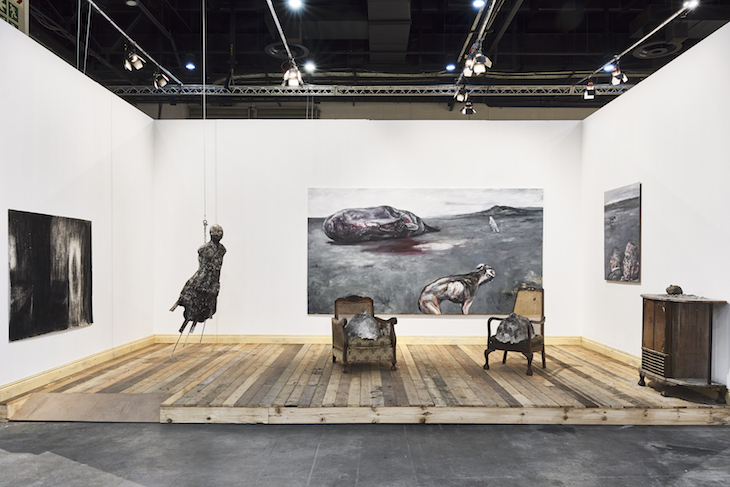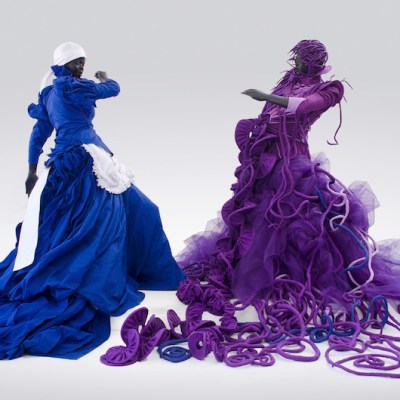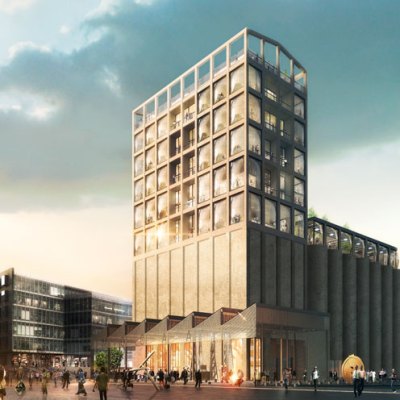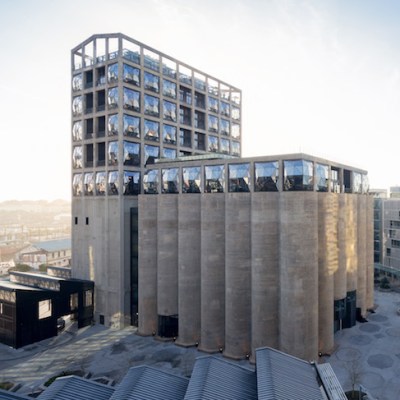The Johannesburg Art Gallery (JAG) has the largest publicly owned collection in Africa, but when I walk through the portico into the Lutyens-designed museum very few of its 10,000 works are on display. Instead, art handlers are bustling around in preparation for ‘The Art of Comics’ – an upcoming survey that leads from the Paris of Honoré Daumier to modern-day South Africa, with a section on contemporary graphic novels and bandes-dessinées. There’s some riveting work here – but it’s impossible to ignore the number of closed doors leading to unused galleries. In other circumstances, these spaces might provide a home for a permanent display of South Africa’s modern and contemporary masters. ‘It would be fantastic to be able to show more of the collection,’ says Tara Weber, who has co-curated the temporary exhibition. But for the moment, the resources aren’t available and the gallery has had to strike a difficult balance between displays of its historic artworks and exhibitions more likely to appeal to new audiences. The opening of the new show is expected to draw crowds, but when I visit the museum is empty.
The gallery is at the heart of what is still known locally as Johannesburg’s central business district, though the banks moved away in the 1990s. Now the pavements in front of the empty skyscrapers are lined with market stalls, while the roads are full of people from all over the continent. But the area is also plagued by poverty. On 1 September, it was here and in nearby Jeppestown that there was a spate of xenophobic attacks on migrants who are blamed for inequality, unemployment and crime. Focusing especially on Nigerian businesses, the violence spread in waves across Johannesburg; at least 12 people were killed, while diplomatic relations between South Africa and Nigeria remain under strain.
Tafereel (2019), Johann Louw, installation view at FNB Art Joburg 2019. Courtesy SMAC Gallery

Eight miles north amid the glass-fronted towers of Sandton – the new financial hub of the city, often described as the wealthiest square mile on the African continent – FNB Art Joburg (13–15 September) at first glance feels a world away. For its 12th edition, the most established art fair in the country has undergone something of a rapid rebirth. After discussions among South Africa’s six main galleries, who were considering their own breakaway event, the event previously known as the Joburg Art Fair was purchased just three months ago by Mandla Sibeko, the director of last year’s iteration. Sibeko has overseen a stripped-back, streamlined display, comprised of 18 galleries – some 60 per cent fewer than last year. More scrupulous attention has been paid to the quality of the art on show and of the layout, with elegant sightlines replacing the standard art-fair grid, leading visitors from one blue-chip display to the next. I find myself standing between a solo display of Wim Botha’s portrait busts at Stevenson, which leer from pedestals and pikes, and opposite a display of cadaverous sculptures by Johann Louw, presented on chairs or hanging from the ceiling in a surreal mock-up of an otherwise sparsely furnished front room. There is also a stand at which JAG presents a few highlights of its collection, including Dumile Feni’s triptych drawing of Crucifixion, Creation and Expulsion, created shortly before the artist went into exile in the late 1960s. With its cast of contorted figures scratched out in spasmodic lines, it’s one of the most tortured artworks I’ve ever seen.
Creation, from an untitled triptych (1960s), Dumile Feni. Courtesy Johannesburg Art Gallery

Despite the sophisticated rebrand there are reminders of the unrest beyond the fair’s walls. Emblazoned in black paint on an otherwise vacant white wall is a sardonic statement: ‘Thanks, xenophobia’. It’s a protest piece by Sheila Chukwulozie at the stall of Gallery 16/16, which was due to participate in the fair’s LAB section – a new initiative that has offered subsidised booths to nine galleries from across the African continent. After reprisal attacks on South Africans in Lagos temporarily caused the South African embassy to close last week, 16/16 was one of two Nigerian galleries that failed to obtain visas for the fair. Meanwhile, within sight of the convention centre doors, thousands of protestors have gathered to demonstrate against the government’s long-standing inaction on gender-based violence in the country, bringing much of Sandton to a standstill.
There are also dozens of powerful and incisive works at the fair by Johannesburg-based artists addressing the social problems facing South Africa – testament to the city’s thriving commercial gallery scene. There is a series of collaged pastiches of Zimbabwean political propaganda posters from the 1970s by Kudzanai Chiurai, a Harare-born artist at Goodman Gallery; much of Chiurai’s work draws parallels between inner-city life in Johannesburg and Mugabe’s Zimbabwe, from which he was exiled in 2004. Beyond the fair, at Standard Bank Gallery, a beautifully wrought and harrowing sonic installation by Gabrielle Goliath, This song is for…, which adapts the traditional genre of the dedication song to tell the stories of nine survivors of rape.
Untitled X (Contradictions) (2019), Kudzanai Chiurai. Courtesy the artist and Goodman Gallery

This work will be at the heart of the inaugural exhibition at Goodman Gallery’s new premises in London, opening on 3 October. Yet for some of the artists with works shown at the fair, there is an undeniable disconnect between the art world and the majority of the local population. Speaking at an event organised to coincide with the fair at the home of Pulane Kingston, one of the upcoming generation of major South African art collectors, the artist Mary Sibande vents a frustration that, as far as discussions of domestic violence are concerned, the art world in Johannesburg is simply ‘preaching to the converted’.
To everything there is a season (2019), Mary Sibande. Courtesy SMAC Gallery

For Mandla Sibeko, the revamp of the fair this year can be the start of something bigger. ‘The private sector played an important role here before 1994, but now is the time when they need to reconnect themselves in a strategic way. There’s so much more the public and private sector could do together,’ he says. His words echo Tara Weber’s at Johannesburg Art Gallery, who says that the relationship between wealthy private companies and public institutions here is ‘one that needs to be re-examined’. The audiences that come to Art Joburg are becoming more representative of the city year on year. Sibeko says, ‘We have more black people buying art than ever in the history of South Africa’. South Africa remains one of the most unequal countries in the world, but perhaps the art world can play a role in ensuring that, in years to come, the country’s remarkable cultural heritage might be appreciated by all.
FNB Art Joburg ran at the Sandton Convention Centre from 13–15 September; ‘The Art of Comics’ is at the Johannesburg Art Gallery until 18 November.


